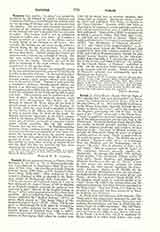

Tonsure (Lat. tondere, “to shear”), a sacred rite instituted by the Church by which a baptized and confirmed Christian is received into the clerical order by the shearing of his hair and the investment with the surplice. The person thus tonsured becomes a partaker of the common privileges and obligations of the clerical state and is prepared for the reception of orders. The tonsure itself is not an ordination properly so called, nor a true order. It is rather a simple ascription of a person to the Divine service in such things as are common to all clerics. Historically, the tonsure was not in use in the primitive Church during the age of persecution. Even later, St. Jerome (in Ezech., xliv) disapproves of clerics shaving their heads. Indeed, among the Greeks and Romans such a custom was a badge of slavery. On this very account, the shaving of the head was adopted by the monks. Towards the end of the fifth, or beginning of the sixth, century, the custom passed over to the secular clergy.
As a sacred rite, the tonsure was originally joined to the first ordination received, as in the Greek Church it still is to the order of lector. In the Latin Church it began as a separate ceremony about the end of the seventh century, when parents offered their young sons to the service of God. Tonsure is to be given by a candidate’s ordinary, though mitred abbots can bestow it on their own subjects. No special age for its reception is prescribed, but the recipient must have learnt the rudiments of the Faith and be able to read and write. The ceremony may be performed at any time or place. As to the monastic tonsure, some writers have distinguished three kinds: (I) the Roman, or that of St. Peter, when all the head is shaved except a circle of hair; (2) the Eastern, or St. Paul’s, when the entire head is denuded of hair; (3) the Celtic, or St. John’s, when only a crescent of hair is shaved from the front of the head. In Britain, the Saxon opponents of the Celtic tonsure called it the tonsure of Simon Magus. According to canon law, all clerics are bound to wear the tonsure under certain penalties. But on this subject, Taunton (loc. cit. inf.) says: “In English-speaking countries, from a custom arising in the days of persecution and having a prescription of over three centuries, the shaving of the head, the priestly crown, seems, with the tacit consent of the Holy See, to have passed out of use. No provincial or national council has ordered it, even when treating of clerical dress; and the Holy See has not inserted the law when correcting the decrees of those councils.”
WILLIAM H. W. FANNING

